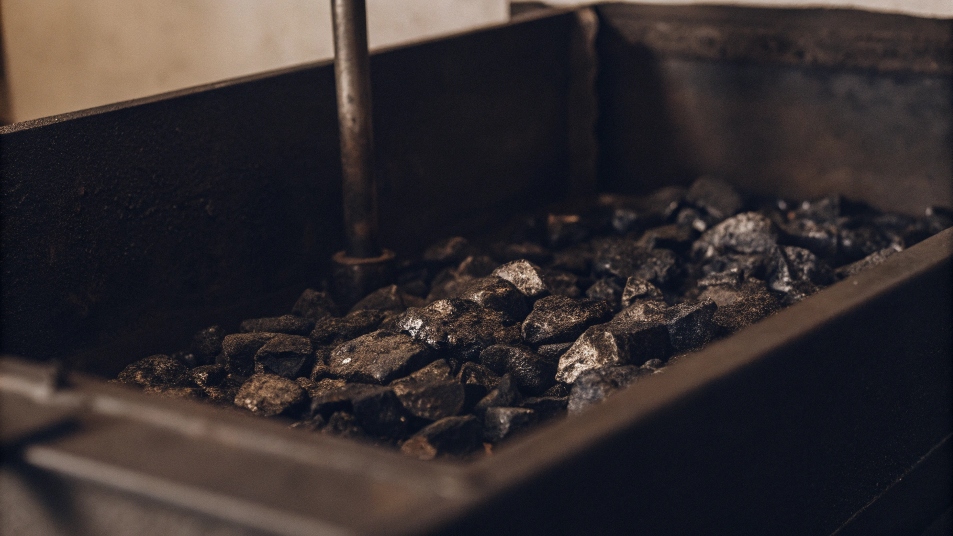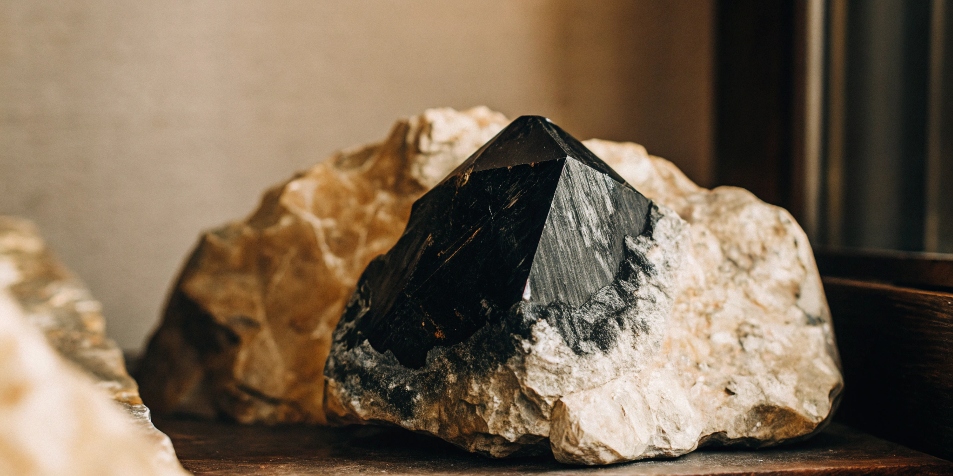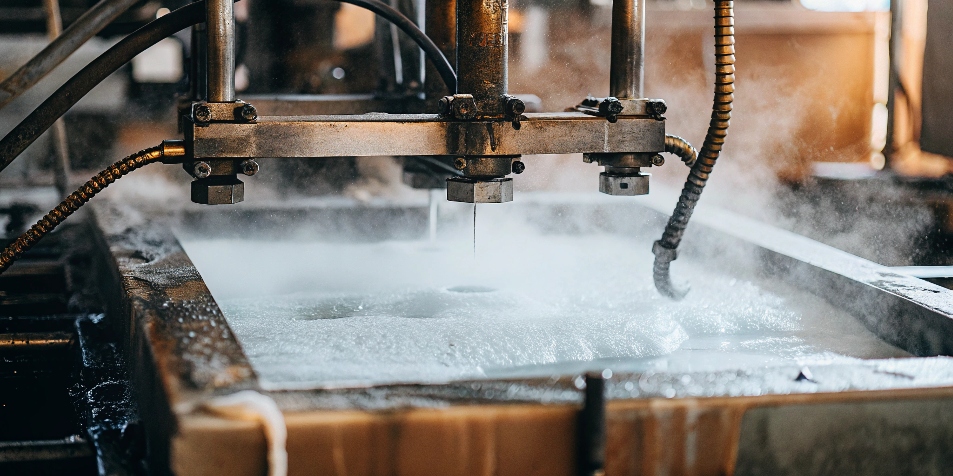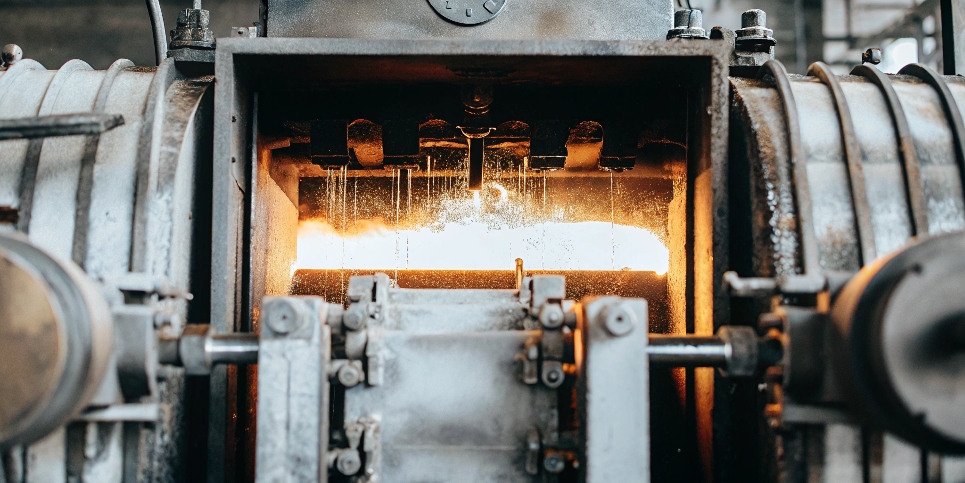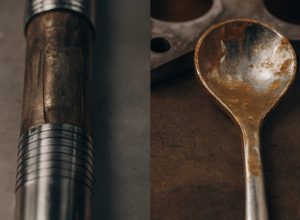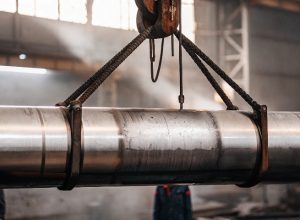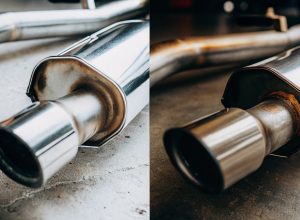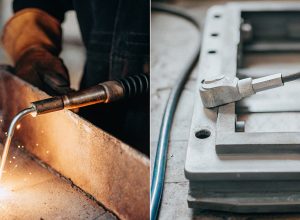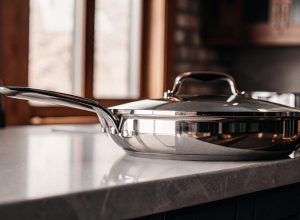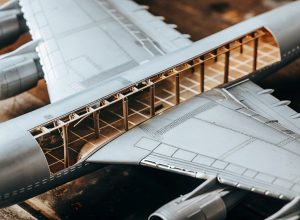¿Le cuesta explicar la producción de titanio a su equipo? Este complejo proceso puede resultar confuso, pero le desglosaré los pasos clave. Así las cosas quedarán mucho más claras.
El titanio se fabrica principalmente Proceso Kroll1. Este método de varios pasos refina mineral de titanio2 en una esponja de metal puro. A continuación, esta esponja se funde y se mezcla con otros elementos en un horno de vacío de alta tecnología para crear lingotes de titanio fuertes y resistentes a la corrosión para uso industrial.
Suena bastante directo, ¿verdad? Pero el viaje desde una simple roca en el suelo hasta una pieza metálica acabada de alto rendimiento está lleno de serios desafíos. Comprender este proceso ayuda a entender por qué el titanio es un material tan especial. También explica su coste y su valor. Empecemos por el principio: dónde se encuentra el titanio. Este conocimiento es la base de todas las decisiones que tome cuando se abastezca de él.
¿Cómo se fabrica naturalmente el titanio?
¿No sabe de dónde procede el titanio? Podría pensar que es un metal puro que se encuentra en la tierra, pero eso no es cierto. Permítame explicarle su verdadero origen natural.
El titanio no se encuentra como metal puro en la naturaleza. En su lugar, existe dentro de diferentes minerales, principalmente rutilo e ilmenita. Estos minerales son muy comunes en la corteza terrestre. La extracción de estas rocas específicas es el primer paso para obtener el titanio que utilizamos en las fábricas.
En realidad, el titanio es el noveno elemento más abundante en nuestro planeta. No es raro. El reto consiste en extraerlo de las rocas en las que está encerrado. Las dos fuentes principales son ilmenita3 (FeTiO₃) y rutilo4 (TiO₂). Como gestora de productos, Lisa, pensar en estas dos fuentes puede ayudarte a comprender el punto de partida de la cadena de suministro.
En mi planta de Baoji somos muy cuidadosos con la procedencia de nuestros minerales. La calidad del mineral inicial influye directamente en la pureza del mineral final. esponja de titanio5 que creamos. Un mal comienzo significa un mal final. Esto es especialmente cierto en el caso de las delicadas piezas aeroespaciales y médicas que producimos. Necesitamos saber que la materia prima está limpia desde el principio.
Minerales clave que contienen titanio
| Mineral | Fórmula química | Contenido típico de dióxido de titanio (TiO₂) |
|---|---|---|
| Rutilo | TiO₂ | 90-95% |
| Ilmenita | FeTiO₃ | 45-65% |
Como puede verse, el rutilo tiene una mayor concentración de dióxido de titanio. Esto lo convierte a menudo en un material de partida más deseable, pero la ilmenita es más abundante y está más disponible. La elección entre uno y otro depende a menudo del coste, la disponibilidad y el proceso de refinado específico que se utilice.
¿Cuál es el proceso de fabricación del titanio?
¿Le parece que el proceso Kroll es un completo misterio? Si no lo entiende, puede ser difícil explicar los costes de material a su equipo o a sus clientes. Le mostraré los pasos clave.
El principal método de fabricación es el proceso Kroll. En primer lugar, el mineral de titanio se calienta con gas cloro para crear tetracloruro de titanio líquido (TiCl₄). A continuación, este líquido se reduce cuidadosamente con magnesio fundido en un reactor sellado. Esta reacción produce una esponja de titanio puro y cloruro de magnesio.
Cuando recibimos la esponja de titanio de gran pureza, la verdadera magia se produce en nuestros hornos. Aquí es donde convertimos una esponja rugosa y porosa en un lingote sólido y utilizable. En mis instalaciones, utilizamos un horno de refundición por arco en vacío (VAR) de 6,5 toneladas. Dentro de este horno, fundimos la esponja junto con elementos de aleación específicos, como aluminio o vanadio. Este es el paso crítico en el que controlamos la química exacta para crear diferentes calidades. Por ejemplo, añadiendo aluminio y vanadio se obtiene el Ti-6Al-4V, o titanio de grado 5, que es muy común. Todo el proceso se realiza al vacío para evitar la contaminación del aire.
De la esponja al lingote
- Compactación con esponja: Prensamos la esponja de titanio en bruto y los elementos de aleación para formar un bloque grande y compacto. Este bloque se convierte en el electrodo del horno.
- Primera fusión (VAR): Colocamos el electrodo en el interior del horno VAR. Un potente arco eléctrico funde el electrodo gota a gota en un crisol de cobre refrigerado por agua. Así se forma el primer lingote.
- Segunda o tercera fusión: Para garantizar la máxima pureza y una estructura perfectamente uniforme, a menudo volvemos a fundir el lingote una segunda o incluso una tercera vez. Cada fusión elimina más impurezas y mezcla mejor las aleaciones.
Este cuidadoso proceso de fusión en varias etapas es la razón por la que nuestro titanio cumple las estrictas normas de las aplicaciones aeroespaciales y médicas.
¿Cuáles son las materias primas del titanio?
¿No está seguro de lo que realmente se necesita para fabricar un lingote de titanio acabado? Este desconocimiento puede afectar a su elección de materiales y a su análisis de costes. Permítame enumerarle los ingredientes esenciales.
Las materias primas principales son minerales que contienen titanio, como la ilmenita y el rutilo. El proceso Kroll también requiere grandes cantidades de gas cloro y un agente reductor, que suele ser magnesio. Para las aleaciones, añadimos otros metales como aluminio, vanadio o molibdeno para crear propiedades específicas.
Lisa, cuando se especifica un determinado grado de titanio, en realidad sólo se está eligiendo una receta. Comprender los insumos de materia prima ayuda a explicar por qué un grado cuesta más que otro. Una barra comercialmente pura de grado 2 sólo necesita la esponja de titanio. Pero una barra de Grado 5 de alta resistencia requiere adiciones caras de aluminio y vanadio. Esto repercute directamente en el precio final. El proceso no consiste sólo en un material, sino en una combinación de varios insumos clave que deben obtenerse, manipularse y mezclarse con extrema precisión. El coste de estos aditivos, más el complejo proceso necesario para combinarlos, es un factor importante en el coste total.
Ingredientes básicos y sus funciones
| Materia prima | Papel en el proceso | Impacto en el producto final |
|---|---|---|
| Mineral de titanio (rutilo/ilmenita) | La principal fuente del elemento titanio. | Determina la pureza y el rendimiento de partida. |
| Cloro | Se utiliza para convertir el dióxido de titanio en tetracloruro de titanio (TiCl₄). | Un producto químico crítico para el proceso Kroll. |
| Magnesio | Actúa como agente reductor para separar el titanio del cloro. | Su pureza es clave para producir una esponja de titanio limpia. |
| Elementos de aleación (Al, V, etc.) | Mezclado con titanio puro para crear aleaciones específicas. | Define el grado, la resistencia y el rendimiento. |
¿Por qué es tan difícil producir titanio?
¿Alguna vez se ha preguntado por qué el titanio es mucho más caro que el acero? Su elevado precio puede ser un gran problema para sus proyectos. Te explico los principales retos de su producción.
La producción de titanio es muy difícil porque este metal es muy reactivo a altas temperaturas. Se combina fácilmente con el oxígeno y el nitrógeno del aire. Esta reacción contamina el metal y lo hace quebradizo y débil. Esto exige costosos sistemas de vacío y controles de proceso muy estrictos.
En su punto de fusión de más de 1.650°C (3.000°F), el titanio actúa como un imán para los átomos extraviados, especialmente el oxígeno. Incluso una pequeña cantidad de contaminación por oxígeno puede arruinar todo un lote de metal. Recuerdo una ocasión en la que una pequeñísima fuga en la junta de nuestro horno de vacío, casi imposible de detectar, provocó la contaminación de todo un lingote de 6,5 toneladas. El lingote parecía perfecto por fuera. Pero cuando lo probamos, los niveles de oxígeno eran demasiado altos. El material era quebradizo y completamente inútil para la pieza aeroespacial crítica del cliente. Fue una lección muy cara. Nos enseñó de nuevo por qué cada detalle del proceso es tan importante.
Esta alta reactividad es el mayor reto, pero hay otros:
- Intensivo en energía: El proceso Kroll y las múltiples etapas de fusión al vacío consumen una enorme cantidad de electricidad. Esto añade mucho al coste.
- Proceso por lotes: A diferencia del acero, que puede fabricarse continuamente, el proceso de Kroll se realiza en lotes separados. Esto es lento, laborioso y menos eficiente.
- Mecanizado difícil: Incluso después de fabricar un lingote, convertirlo en una pieza final es difícil. Las propiedades del titanio lo hacen difícil de cortar y moldear, lo que añade más costes y tiempo.
Todos estos factores explican por qué el titanio tiene un precio tan elevado.
Conclusión
La producción de titanio es un viaje complejo desde el mineral natural hasta una aleación de alto rendimiento. Entender este difícil proceso explica su valor y coste, ayudándole a elegir el material adecuado para aplicaciones críticas.
-
Explore este enlace para comprender el proceso Kroll, el principal método de producción de titanio, y su importancia en la industria. ↩
-
Conozca los distintos tipos de mineral de titanio, sus propiedades y cómo influyen en el proceso de producción. ↩
-
Conozca la ilmenita, sus propiedades y cómo constituye una importante fuente de titanio. ↩
-
Comprender la importancia del rutilo como mineral portador de titanio y su impacto en la eficacia de la producción. ↩
-
Descubra el papel de la esponja de titanio en el proceso de producción y por qué su pureza es crucial para la calidad. ↩

